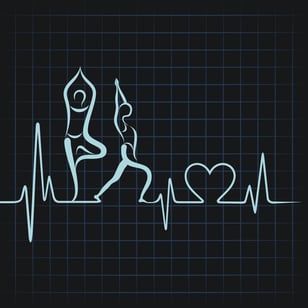Throughout 2015, we’ll be blogging about our dreams for corporate wellness, fitness, and aging well. Some of the content will represent a gentle “poking fun” at the industry, but it’s all written to stimulate thought about what really could be if we put our heads together and started mapping out what’s really possible in the realm of individual wellbeing. We hope you’ll join the conversation by commenting on the blogs, giving us additional ideas about which to write, and/or by finding us on Twitter at #wellnesswhatif.
 You’ve heard the saying, “It takes a village to raise a child,” right? The idea is that a child needs a whole village worth of support, influence, education, and diversity to be raised as a healthy and vibrant member of society. If we look at individual wellbeing through a similar lens, I would say that it takes a team to help an individual be well.
You’ve heard the saying, “It takes a village to raise a child,” right? The idea is that a child needs a whole village worth of support, influence, education, and diversity to be raised as a healthy and vibrant member of society. If we look at individual wellbeing through a similar lens, I would say that it takes a team to help an individual be well.
When I think about the generally poor health (admittedly, I tend to focus on physical health) of adults in the U.S., specifically preventable issues, I wonder how much is connected to adults simply not knowing how to choose better health and how much goes back to adults making unhealthy choices even though they know better.
Let’s face it, there are a lot of external players who influence an individual’s health. I can’t get into all of those factors here, but I do want to focus on the potential for a better relationship between health care providers and exercise specialists. What follows are some of the historical challenges, as well as some what if ideas for working better together to take a team approach to individual wellbeing.
When I was working in corporate fitness several years ago, it wasn’t uncommon for me start talking with a new member about her goals for exercise and learn that she came to see me because her physician recommended she start exercising. In further conversation, I would learn that either the doctor provided no guidance on how often, how much, what intensity of exercise would be best; or (sometimes worse) the physician provided recommendations that were not practical for the individual.
It was always so helpful, when working with individuals who had a complicated health history, to get a physician recommendation that took into account that complex health picture. With more information from the doctor, I was able to write a more effective exercise prescription. But more often than not, the physician is hurried, and filling out one more form isn’t top on their list, so I’d get an almost blank form returned with little more than their signature.
What if physicians had more time for discussion with patients about preventive health?
I think at least some of the barrier, though I’ve never heard anyone actually articulate this, is the image of the personal trainer. The certifications available for personal trainers are many and varied in terms of their rigor, and it leaves a lot of question about credentials. Licensure has been debated for years in the industry, and although the discussion varies by state (currently Louisiana is the only state with licensure requirements for clinical exercise physiologists), I think the reason licensure is even on the table is because requirements for certification are so widely varied, it’s tough for even a well-educated individual to get to the bottom of what “certified personal trainer” really means.
What if all certifications had to meet a specific standard that raised the bar for education and experience?
The American College of Sports Medicine released an Exercise Is Medicine campaign years ago with the goal of having physicians make regular exercise a part of their recommendations for practitioners to their patients. The program includes guidelines for health care providers as well as for exercise specialists to interact in the best interest of the public. While some progress has been made on the partnership between the medical community and exercise professionals, there is much work to be done to bridge that professional relationship for the improved outcomes of the patients.
What if health insurance supported visits with a certified exercise specialist as part of a prescription for better health? (This would not be unlike counseling from a registered dietitian that accompanies a diagnosis of diabetes.)
What if general practitioner offices hired exercise physiologists to counsel patients right in their offices?
What if medical training provided some insight into exercise prescription, and curriculum for exercise physiologists provided insight into what the doctor has to accomplish with a patient in an office visit?
We have a long way to go to build a strong village that contributes positively to individuals’ health, and this health care + exercise practitioner discussion is only one portion of that village. What other areas are you passionate about? Where do we need to build a better village to help individuals make healthier choices?
Read our case study, how partnering with NIFS and putting a qualified fitness professional in their new facility helped jump start this fitness program.

